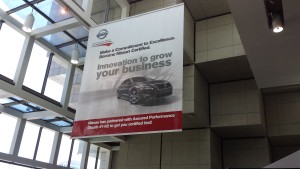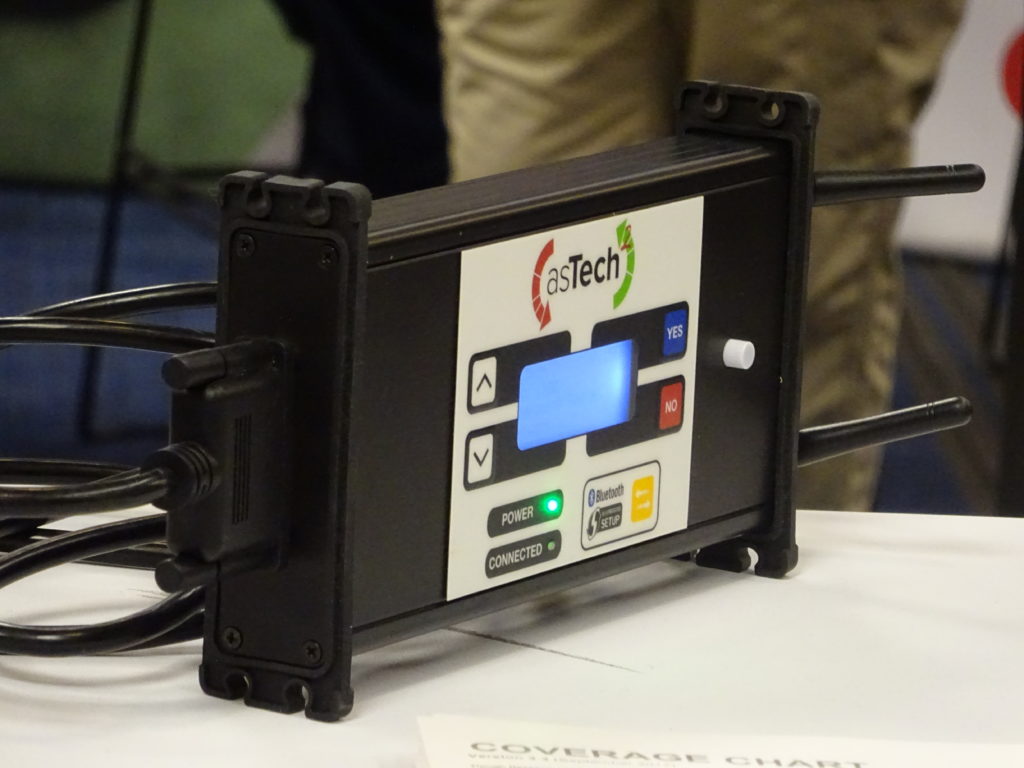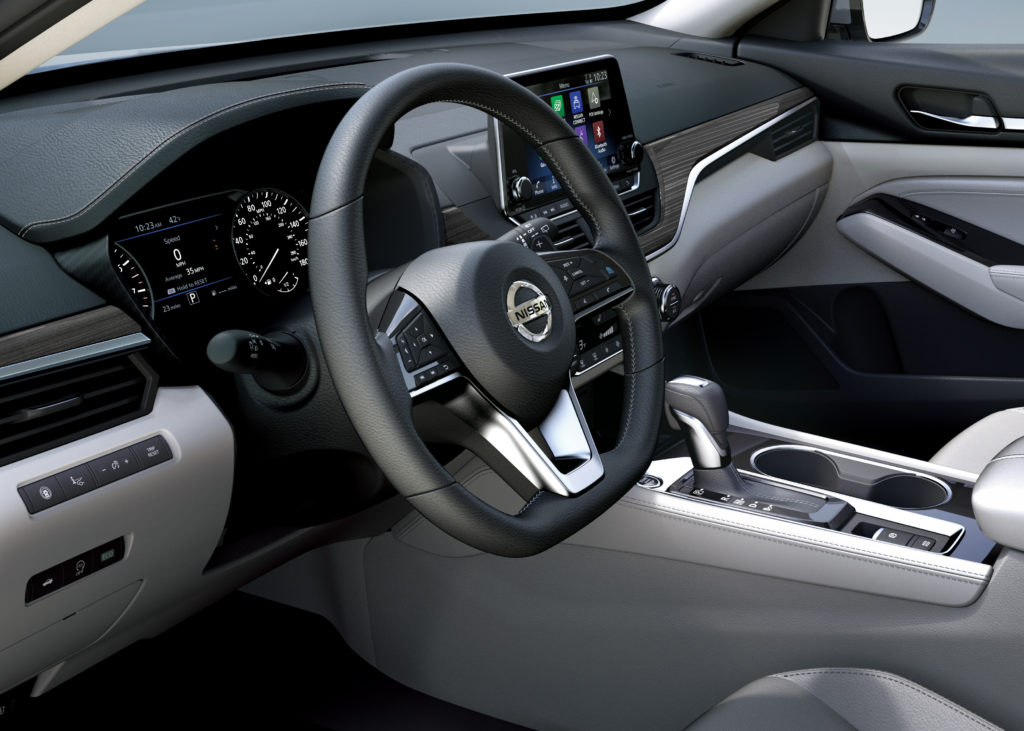
Nissan offers scanning documentation, reimbursement advice for certified auto body shops
By onAnnouncements | Associations | Business Practices | Education | Insurance | Market Trends | Repair Operations | Technology
Nissan’s announcement that certified collision repairers would be required to use either the asTech or the official OEM CONSULT tools to scan vehicles came accompanied with advice for having insurers or customers pay for the work.
Among the tips was a call for extensive documentation supporting the procedure:
“Certified Collision Centers should prepare a diagnostic ‘package’ of vital information with each completed repair and include information that supports the use of the asTech OEM Diagnostic Repair Process,” a “Keys to Reimbursement” brochure sent Monday to certified repairers states.
All Nissan-certified collision repairers would be required as of Oct. 1 to use the asTech or CONSULT tool on all 2008 or later vehicles, the OEM said. Any certified or nearly certified shop without an asTech as of July 15 would get one for free if they met certain conditions, including paying for 50 scans in 120 days, according to Nissan.
The asTech normally costs $2,500. The company charges $119.95 for the first scan on a vehicle, be it pre, post, or diagnostic, and $50 per additional scan. A $119.95 initial scan and $50 second scan on the same vehicle would count toward two of the repairer’s 50 scans.
Alternatives would be for the shop to either sublet the scans to a dealer with a CONSULT, or buy a CONSULT and have a qualified technician use it to run diagnostics and address the issues at the body shop itself. The CONSULT software costs $400 a year, according to NASTF; the price of the tool and associated equipment was unclear. (And of course, there’s the cost of paying that in-house technician.)
These costs and unincluded ones such as preparing the vehicle for a scan might be passed on to a customer, who if not out-of-pocket would need to secure reimbursement from an insurer.
Nissan suggested ways in which reimbursing the act of scanning could save “insurance partners” other money indirectly:
• asTech secures the vehicle build data and provides body shops with access to all OEM technical service bulletins and active recalls. When supported by the OEM, asTech can provide your certified shop with Freeze Frame data. Access to these important data points will help your shop deliver important information about warranty and unrelated prior damage. This information is critical to your insurance partners.
• Certified Collision Centers using the patented asTech process can diagnose and repair vehicles while they remain in the production lane at the collision center. This process will help ensure fixed right first time, improve cycle time, reduce comebacks, and boost customer satisfaction and confidence in the repair. (Minor formatting edits.)
Nissan also instructed collision repairers to provide extensive documents for the insurer’s claim file:
A properly documented repair always starts with a solid understanding of Who, What, Why, and How—who performed the work, what work was performed, why it was performed, and how it was performed.
To support the repair, the following information should be placed in the claim file:
• OEM Position statement
• The asTech Comprehensive Diagnostic Service Report – be sure to emphasize all of the vital information provided with each asTech report
• OEM tool used in the service
• ASE Factory Trained Technician who performed the service
• Number of Modules read
• Complete List of all DTCs identified
• Explanation of every DTC
• Repair Recommendations
• A warranty with every successfully completed service request
• All relevant OEM Repair Procedures sourced from Nissan or INFINITI TechInfo (Minor formatting edits.)
Nissan also advised a repairer to “Take photos of the damaged area parts, e.g., switches, wires, sensors, warning lights, door handles of the car, etc. Photos validate the complexity of the diagnostic repairs needed to restore the vehicle safety systems to the OEM-intended operation standard.”
Nissan not only called for shops to supply its position statement related to scanning, it said the document should be “prominently” posted on the wall of a designated adjuster office or customer waiting room.
“Posting the Nissan OEM position statement, along with other brands you repair sends a powerful message to your customers and insurance partners that OEM factory tools play a vital role in completing safe and proper repairs,” Nissan wrote.
However, it said the certified shops still had to “research and present all requirements for Nissan and INFINITI repairs as identified in TechInfo and service manuals.”
The point here seems to be that a position statement telling shops and laymen a scan is needed isn’t a substitute for repair procedures explaining how to perform the diagnostic or what to do with the resulting information.
Auto body shops might already be assembling this kind of documentation and conducting these practices to smooth the reimbursement process and protect themselves in case of a lawsuit.
Big Sky Collision owner Matthew McDonnell in 2017 said his accounts receivable posts a 90 percent success rate because he documents everything he requests from carriers. He said this year he also gives detailed digital documentation to customers too.
But we asked Nissan if the behavior described in the brochure would be formally required of certified shops.
“This document is a best practice document for shops if they choose to follow the recommendations,” Nissan collision network growth and strategy manager Mark Zoba wrote in an email Tuesday. “What is key for Nissan is that a complete, safe, and proper repair was conducted to the vehicle following OEM repair procedures. The documentation, which could include the documented OEM repair procedures, are recommendations for the shops on how they should document the repair file. It is up to the shop’s discretion how detailed they feel they need to be to convey the depth and extent of the repair. Each repair is unique in nature and should be treated as such. Some repairs may require more documentation then others—but again, it is up to the shop to make that determination.
“I do not know of any insurance company that has told me they do not want to fix a vehicle correctly. What they would like to see is that the shop did what was required. If a shop expects to be reimbursed for that aspect of the claim, it helps to have that documentation for the insurance carrier.”
The Nissan guidance could potentially backfire if unscrupulous insurers use it as grounds to deny bills.
For example, it seems like a no-brainer that a collision repairer would need to scan the three 2019 Nissan Altima trims coming standard with the nearly-self-driving feature ProPilot Assist following a repair. You don’t need a position statement or repair procedure; common sense suggests it’d be necessary.
But the document implies that without an extensive document package and “photos of the damaged area parts, e.g., switches, wires, sensors, warning lights, door handles of the car, etc.,” the carrier should refuse to reimburse the customer who owes the repairer.
Asked about that issue, Zoba replied:
There are two elements that a shop needs to be aware from these best practices. First is the need to conduct the post repair scan on the vehicle to confirm any Diagnostic Trouble Codes (DTCs). There is a cost to complete this in manpower, systems, etc., and should be documented as part of the repair through the use of OEM repair procedures.
Nissan offers our certified network a Nissan/INFINITI Collision Estimating Essentials course. In this course, shops learn how to navigate the OEM repair procedures. This leads to a more complete blueprint or repair plan for the shop leading to the potential for reduced overall cycle time of the repair.
The second part of this process, where the documentation comes in, has to do with DTC resolution. This is possibly a multi-step process if DTCs are identified and what is required to resolve them. A DTC code may be simple or complex in nature for the shop to resolve such as a faulty sensor, broken wire, or many other situations. When this occurs, it is a best practice for the shop to document what was required to resolve an identified DTC on the vehicle. If it was a direct result of the incident that brought the vehicle to the repair shop, it should be included in the repair of the shop and compensation for that repair should be considered.
In the end, this is about information transparency for the customer to show them a complete repair was conducted to return the vehicle back to pre-accident condition. This transparency alleviates stress, instills confidence, and helps protect the consumer and the overall Nissan brand, shop reputation, and the insurance carrier loyalty. Only a post-repair scan will identify if all systems check or if DTCs are present that require additional investigation and time to resolve. As a best practice, the shop should document what was required to resolve a DTC until all DTCs are addressed by the shop.
We also asked Zoba if the document distorted the insurer-customer-repairer relationship, elevating an insurer’s opinion that didn’t technically matter. The repairer’s contract is with the customer, who has a separate contract with the insurer to be paid back for their loss — the amount of money the customer owes the repairer to have their vehicle made whole.
If the repair professional feels in their professional opinion that the Altima needs scanning and the customer authorized the work, why would either party owe the insurer such documentation — documentation which isn’t specified by Nissan for any other repair and could mean higher administrative costs and repair bills. (Again, the shop might assemble such documentation anyway for liability or professional reasons; our point here is more philosophical.)
Asked about this notion, Zoba replied:
Again, it comes down to a safe and proper repair and what the vehicle diagnostic scan reveals. If there are DTCs present, they MUST be resolved as part of the repair process and compensated accordingly for the shop. If that means providing the documentation to the insurance carrier or the customer, the shop is prepared to do so. These best practices were designed as a guide to help shop identify what to document when they resolve any DTCs with the vehicle as part of that post-repair diagnostic scan. It is then up to the shop to determine how that information will be used.
Many shops do not consider the resolution of the DTCs as part of the repair plan. They do the industry a disservice by putting a flat five tenths of an hour or something else for the post-repair scan. There are times when more is required as a result of the incident. We want our shops to provide the best possible repair fixing the vehicle right the first time before the vehicle gets back in the hands of the owner. To accomplish this, shops will need to demonstrate that the person with the proper training for that work performed the repairs using the right tools and equipment and followed OEM repair procedures. Through our tool programs, Collision Estimating Essential course and other training opportunities, and access to our TechInfo sites for certified network shops, Nissan is delivering better cycle time and greater customer satisfaction while protecting the Nissan brand, the shop’s reputation, and the insurance carrier through an enhanced customer experience.
More information:
“Making Scanning a No-Brainer: Request Your Complimentary asTech Device Today!”
Nissan (converted to PDF, redacted by Repairer Driven News), July 15, 2019
Nissan, July 15, 2019
Nissan, July 15, 2019
Nissan collision repair procedures website (use Internet Explorer)
Infiniti collision repair procedures website (use Internet Explorer)
Images:
A banner touts Nissan certification in the Cobo Center during NACE 2015. (John Huetter/Repairer Driven News)
The asTech is seen at SEMA 2017. (John Huetter/Repairer Driven News)
A 2019 Nissan Altima is shown. (Provided by Nissan)


